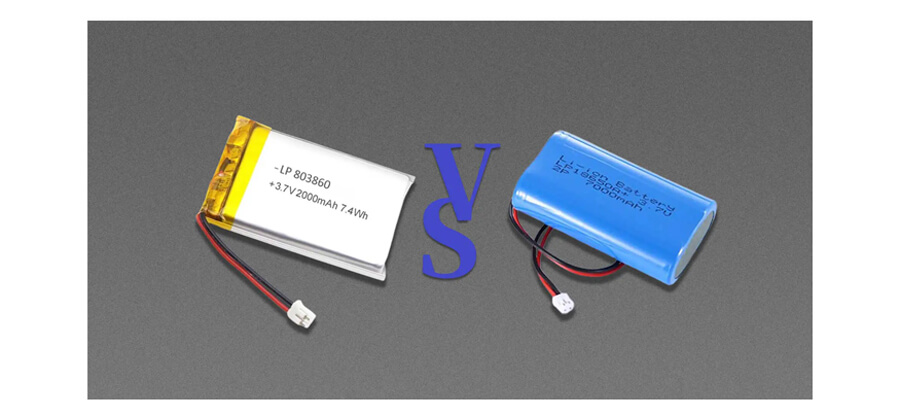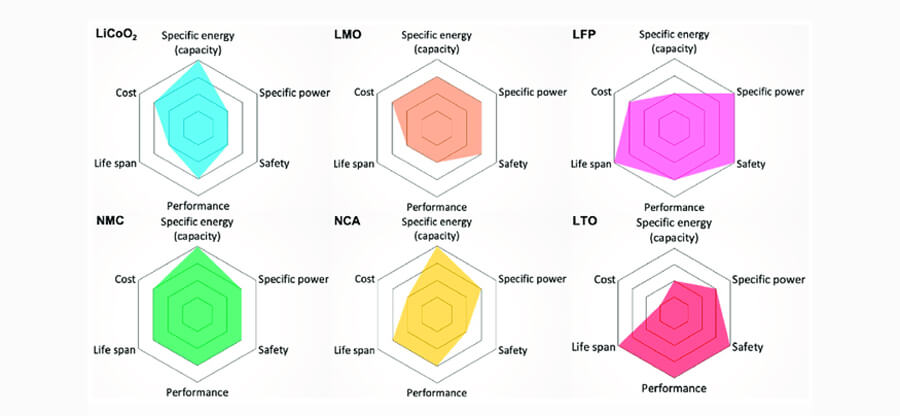Content

In the ever-evolving world of portable power solutions, two battery types frequently stand out: 2S LiPo batteries and lithium-ion batteries. This comprehensive guide will delve deep into the intricacies of these power sources, exploring their composition, performance characteristics, applications, and environmental impact. By the end of this article, you'll have a thorough understanding of both battery types, enabling you to make informed decisions for your specific power needs.
2S LiPo is an acronym that stands for "2 Series Lithium Polymer." This designation provides crucial information about the battery's configuration and chemistry.
- Voltage: 7.4V nominal, 8.4V when fully charged
- High discharge rates
- Lightweight and flexible design
- Suitable for high-performance applications
The "2S" in 2S LiPo indicates that the battery pack consists of two lithium polymer cells connected in series. Each individual cell has a nominal voltage of 3.7V. When connected in series, these voltages add up, resulting in a total nominal voltage of 7.4V for the entire 2S LiPo battery pack.It's important to note that the actual voltage of a LiPo battery varies depending on its charge state:
- Fully charged: 4.2V per cell (8.4V for 2S)
- Nominal voltage: 3.7V per cell (7.4V for 2S)
- Discharged: 3.0V per cell (6.0V for 2S)
One of the most significant advantages of LiPo batteries is their ability to deliver high discharge rates. This characteristic is often expressed as the "C rating." For example, a 2000mAh battery with a 20C rating can safely deliver up to 40A of current (2000mAh * 20 = 40,000mA or 40A).
LiPo batteries are known for their lightweight and flexible design. The polymer electrolyte used in these batteries allows for a variety of shapes and sizes, making them ideal for applications where space is at a premium.
The term "lithium-ion battery" (often abbreviated as Li-ion) refers to a family of rechargeable battery chemistries. These batteries use a lithium compound as the positive electrode (cathode) material and typically graphite as the negative electrode (anode).
- Voltage: Typically 3.6V or 3.7V per cell
- High energy density
- Low self-discharge rate
- Versatile applications
A single lithium-ion cell typically has a nominal voltage of 3.6V or 3.7V, depending on the specific chemistry used. Like LiPo batteries, the voltage of a lithium-ion cell varies with its charge state:
- Fully charged: 4.2V
- Nominal voltage: 3.6V or 3.7V
- Discharged: 2.5V to 3.0V (depending on chemistry)
Lithium-ion batteries can be configured in series or parallel to achieve higher voltages or capacities, respectively. For example, a 3S1P configuration (3 cells in series, 1 in parallel) would have a nominal voltage of 11.1V.
One of the primary advantages of lithium-ion batteries is their high energy density. This means they can store a large amount of energy relative to their weight and volume. This characteristic has made lithium-ion batteries the go-to choice for many portable electronic devices and electric vehicles.
Lithium-ion batteries have a relatively low self-discharge rate compared to other rechargeable battery technologies. When not in use, they typically lose only about 1-2% of their charge per month, making them suitable for long-term energy storage applications.
To better understand the differences between 2S LiPo and lithium-ion batteries, let's examine their elemental structures in detail:
| Component |
2S LiPo |
Lithium-ion |
| Cathode |
Lithium-metal oxide (e.g., LiCoO2) |
Lithium-metal oxide (e.g., LiCoO2, LiMn2O4, LiFePO4) |
| Anode |
Graphite |
Graphite (some newer designs use silicon or lithium titanate) |
| Electrolyte |
Polymer gel |
Liquid organic solvent with lithium salts |
| Separator |
Polymer membrane |
Microporous membrane (usually polyethylene or polypropylene) |
| Current Collectors |
Aluminum (cathode), Copper (anode) |
Aluminum (cathode), Copper (anode) |
| Casing |
Flexible polymer pouch |
Rigid metal or plastic casing |
Both 2S LiPo and lithium-ion batteries use lithium-metal oxides for their cathodes. However, lithium-ion batteries have a wider variety of cathode materials available, each with its own set of characteristics:
- Lithium Cobalt Oxide (LiCoO2): High energy density, but less stable and more expensive.
- Lithium Manganese Oxide (LiMn2O4): More stable and cheaper than LiCoO2, but lower energy density.
- Lithium Iron Phosphate (LiFePO4): Very stable and long-lasting, but lower voltage and energy density.
Both battery types typically use graphite as the anode material. However, some newer lithium-ion designs are exploring alternative materials like silicon or lithium titanate to improve capacity or charging speed.
The key difference between LiPo and Li-ion batteries lies in the electrolyte. LiPo batteries use a polymer gel electrolyte, which gives them their flexible nature. Lithium-ion batteries use a liquid electrolyte, which requires a rigid casing to contain it.
The separator prevents direct contact between the cathode and anode while allowing lithium ions to pass through. LiPo batteries use a polymer membrane, while Li-ion batteries typically use a microporous membrane made of polyethylene or polypropylene.To visualize the elemental composition of these batteries, consider the following pie charts:
2S LiPo Elemental Composition
■ Lithium (30%)
■ Carbon (30%)
■ Oxygen (30%)
■ Other (10%)
Lithium-ion Elemental Composition
■ Lithium (25%)
■ Carbon (25%)
■ Oxygen (25%)
■ Other (25%)
Let's compare the key performance characteristics of 2S LiPo and lithium-ion batteries:
| Characteristic |
2S LiPo |
Lithium-ion |
| Nominal Voltage |
7.4V |
3.6-3.7V (single cell) |
| Energy Density |
130-200 Wh/kg |
150-250 Wh/kg |
| Max Discharge Rate |
Typically 30C or higher |
Usually 1C-3C, up to 10C for high-performance |
| Charge Rate |
Typically 1C-2C |
Usually 0.5C-1C |
| Cycle Life |
300-500 cycles |
500-1000 cycles |
| Self-discharge Rate |
Higher |
Lower, about 1-2%/month |
| Flexibility |
High, can be shaped |
Low, typically rigid casing |
| Safety |
More sensitive, needs careful handling |
Relatively stable, but still requires caution |
| Main Applications |
RC models, drones, wearables |
Smartphones, laptops, electric vehicles |
2S LiPo batteries provide a higher voltage (7.4V nominal) compared to single-cell lithium-ion batteries (3.6-3.7V nominal). This higher voltage can be advantageous for applications requiring more power. However, lithium-ion batteries can be configured in series to achieve similar voltages.The higher voltage of 2S LiPo batteries can be beneficial in several ways:
- Reduced current draw for the same power output
- Potential for smaller wire gauges in the device
- Fewer cells needed for high-voltage applications
However, it's important to note that many devices are designed for specific voltage ranges, so the higher voltage of a 2S LiPo may not always be an advantage.
Lithium-ion batteries generally have a higher energy density than LiPo batteries. This means they can store more energy per unit of weight or volume. Typical energy densities are:
- Lithium-ion: 150-250 Wh/kg
- LiPo: 130-200 Wh/kg
The higher energy density of lithium-ion batteries makes them ideal for applications where weight and space are at a premium, such as in smartphones or electric vehicles.However, the flexible nature of LiPo batteries allows for more efficient use of space in certain applications. Their ability to be molded into various shapes can sometimes offset their lower energy density by fitting into spaces that rigid lithium-ion cells cannot.
2S LiPo batteries excel in high-discharge rate applications. They can deliver large amounts of current quickly, making them ideal for RC vehicles, drones, and other high-performance devices. LiPo batteries can often sustain discharge rates of 30C or higher, meaning a 2000mAh battery could potentially deliver 60A continuously.Lithium-ion batteries typically have lower maximum discharge rates but can provide more consistent power over longer periods. Most lithium-ion cells are designed for discharge rates between 1C and 3C, with some high-performance cells reaching up to 10C.The high discharge rates of LiPo batteries come with trade-offs:
- Reduced cycle life when frequently discharged at high rates
- Increased heat generation
- Potential for reduced overall capacity
LiPo batteries generally accept higher charge rates than traditional lithium-ion batteries. Many LiPo batteries can be safely charged at 1C or even 2C rates, meaning a 2000mAh battery could be fully charged in 30 minutes at a 2C rate.Most consumer lithium-ion batteries are charged at slower rates, typically 0.5C to 1C, to preserve long-term capacity and reduce stress on the battery.
Lithium-ion batteries typically have a longer cycle life than LiPo batteries. A well-maintained lithium-ion battery might last for 500-1000 charge cycles before its capacity drops to 80% of its original value. LiPo batteries, especially when used in high-discharge applications, may see significant capacity loss after 300-500 cycles.However, the actual cycle life of both battery types can vary greatly depending on factors such as:
- Depth of discharge
- Charge and discharge rates
- Operating temperature
- Quality of manufacturing
Both 2S LiPo and lithium-ion batteries require careful handling to ensure safe operation. However, LiPo batteries are generally considered more sensitive to physical damage and mishandling.LiPo Safety Considerations:
- More susceptible to physical damage due to soft pouch construction
- Higher risk of fire if punctured or severely damaged
- Require specialized chargers with cell balancing capabilities
- Should not be discharged below 3.0V per cell

Lithium-ion Safety Considerations:
- More resistant to physical damage due to rigid casing
- Still pose a fire risk if damaged or improperly charged
- Many modern devices include built-in protection circuits
- Generally more forgiving of slight overcharging or over-discharging
Both battery types can be safely used with proper care and adherence to manufacturer guidelines.
The unique characteristics of 2S LiPo and lithium-ion batteries make them suitable for different applications.
2S LiPo Batteries
- RC vehicles and drones: The high discharge rates and lightweight nature of LiPo batteries make them ideal for these high-performance applications.
- Wearable technology: The flexible form factor allows LiPo batteries to be integrated into clothing or accessories.
- Thin or flexible devices: Tablets, e-readers, and some smartphones use LiPo batteries to achieve a slim profile.
- Portable audio equipment: Headphones and portable speakers often use LiPo batteries for their compact size and high energy density.
Lithium-ion Batteries
- Smartphones and laptops: The high energy density and long cycle life of lithium-ion batteries make them ideal for consumer electronics.
- Electric vehicles: Large-format lithium-ion cells power most modern electric cars and bikes.
- Power tools: The consistent power output and relatively high energy density of lithium-ion batteries have largely replaced older NiC
FAQs







